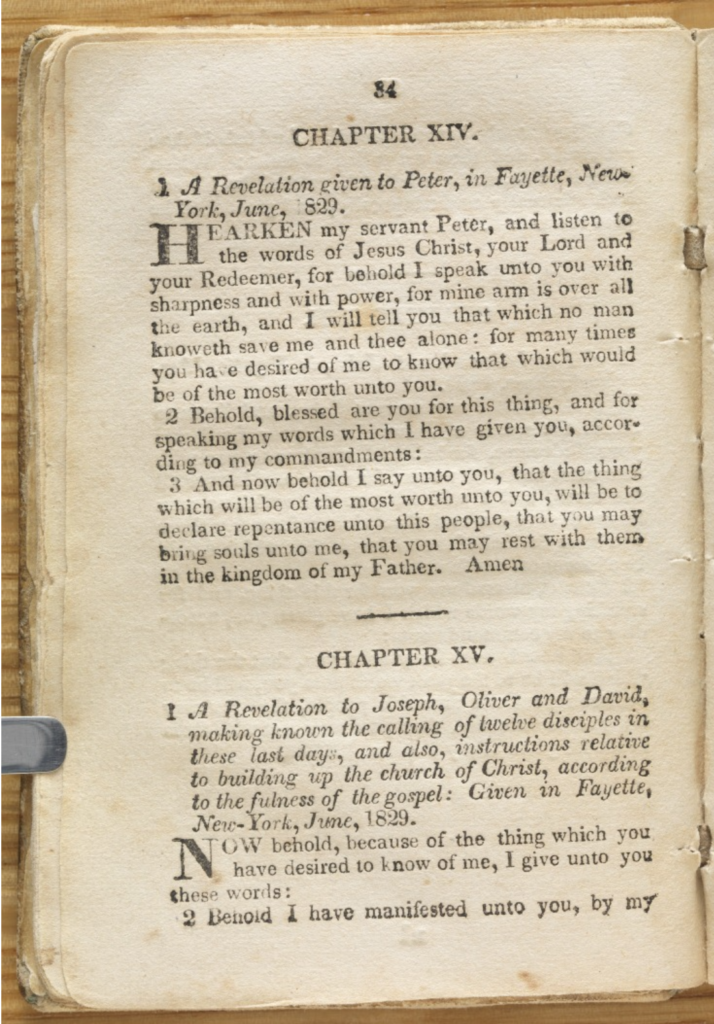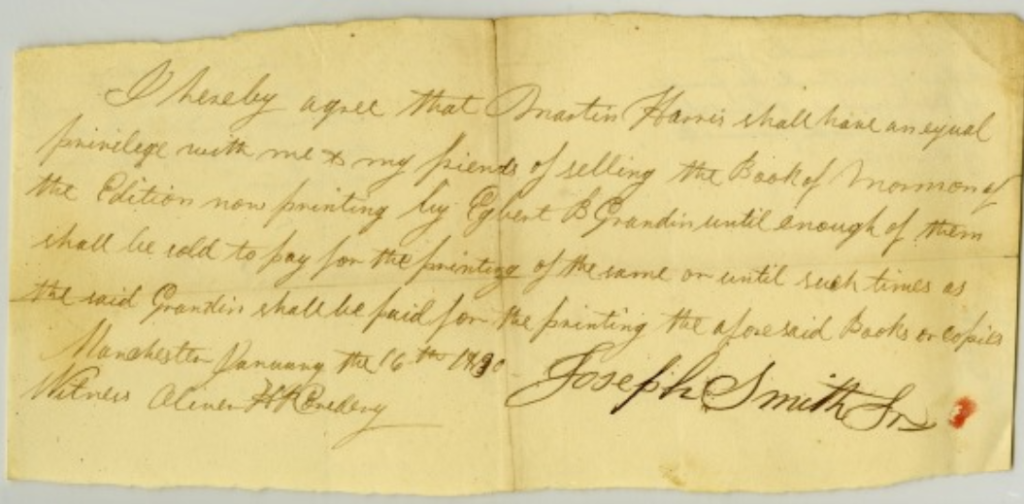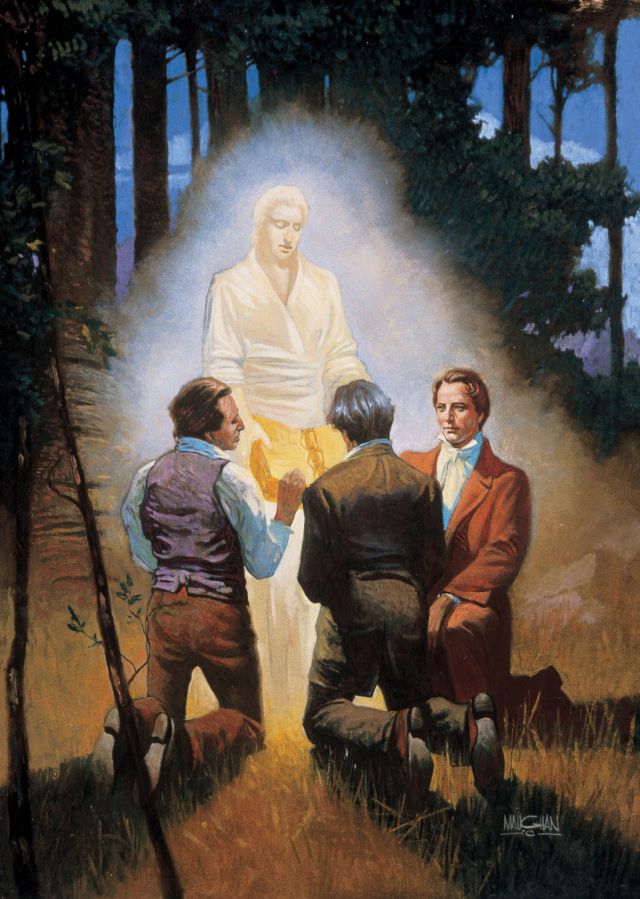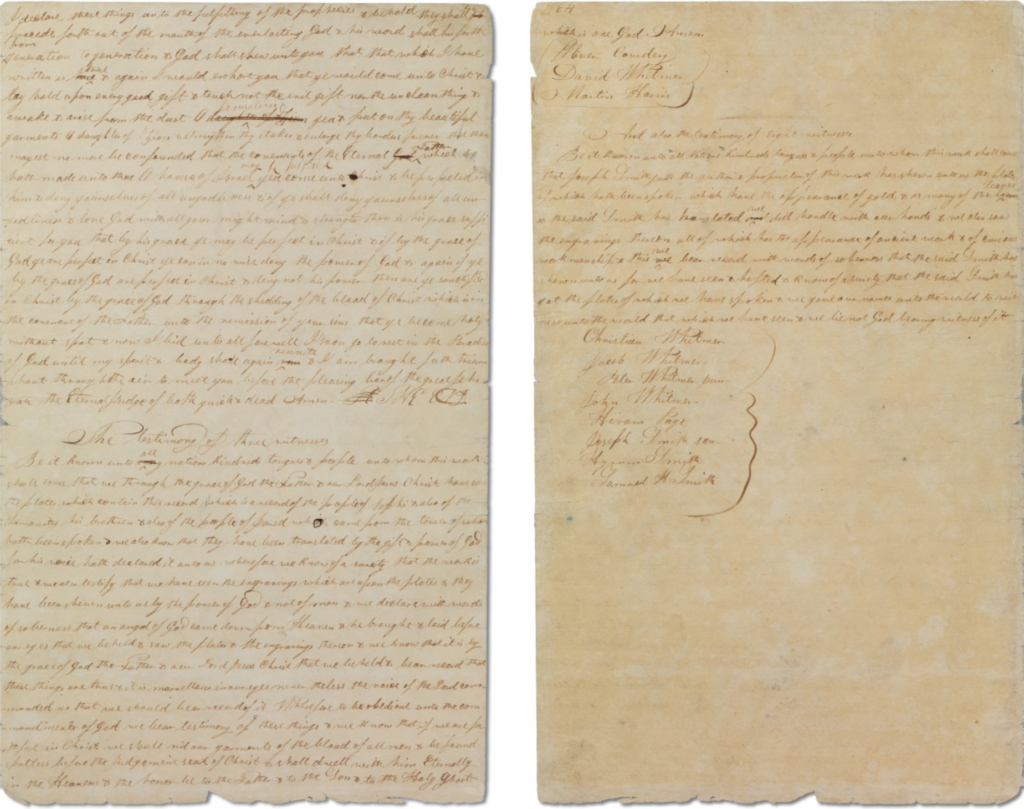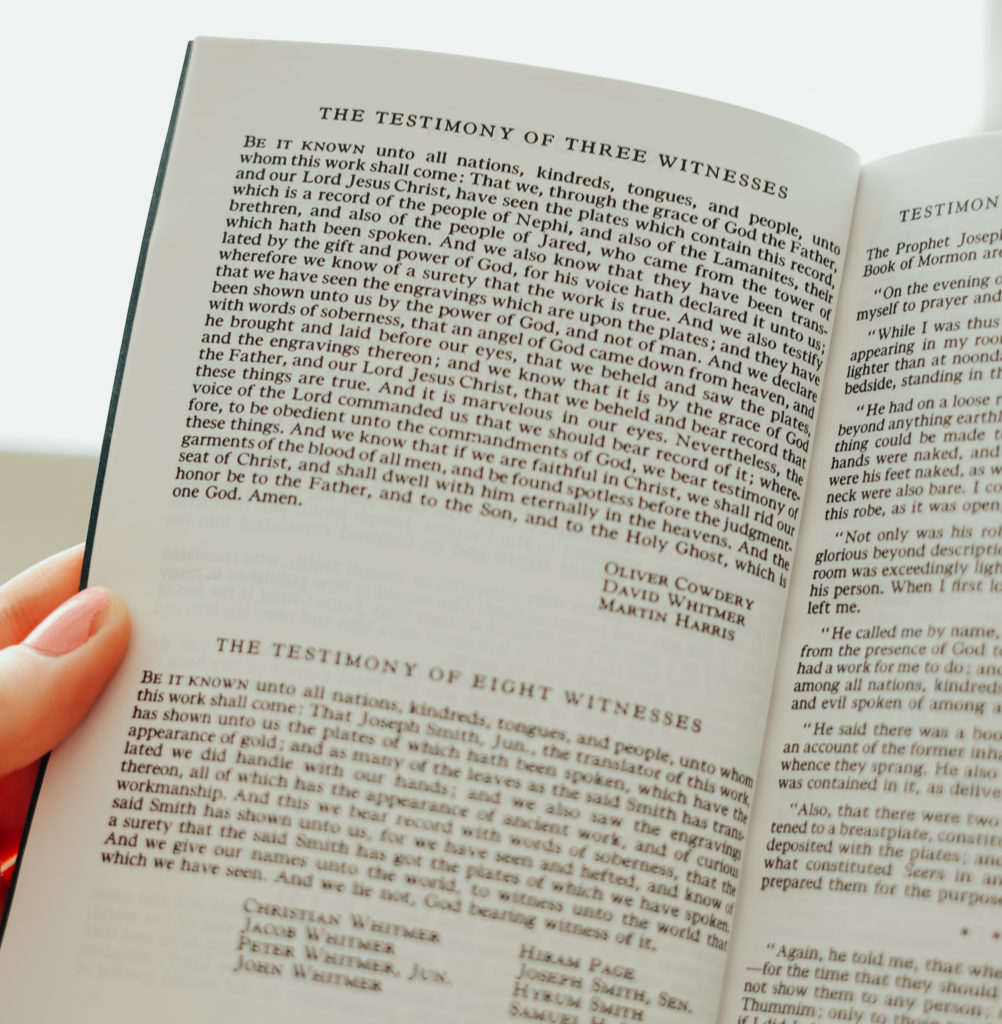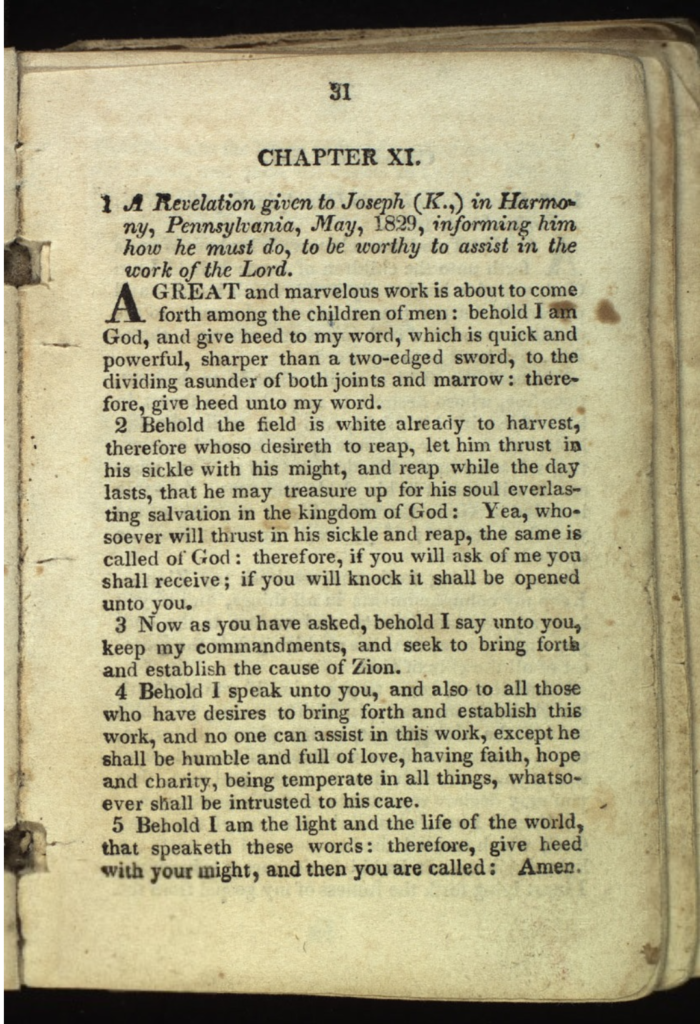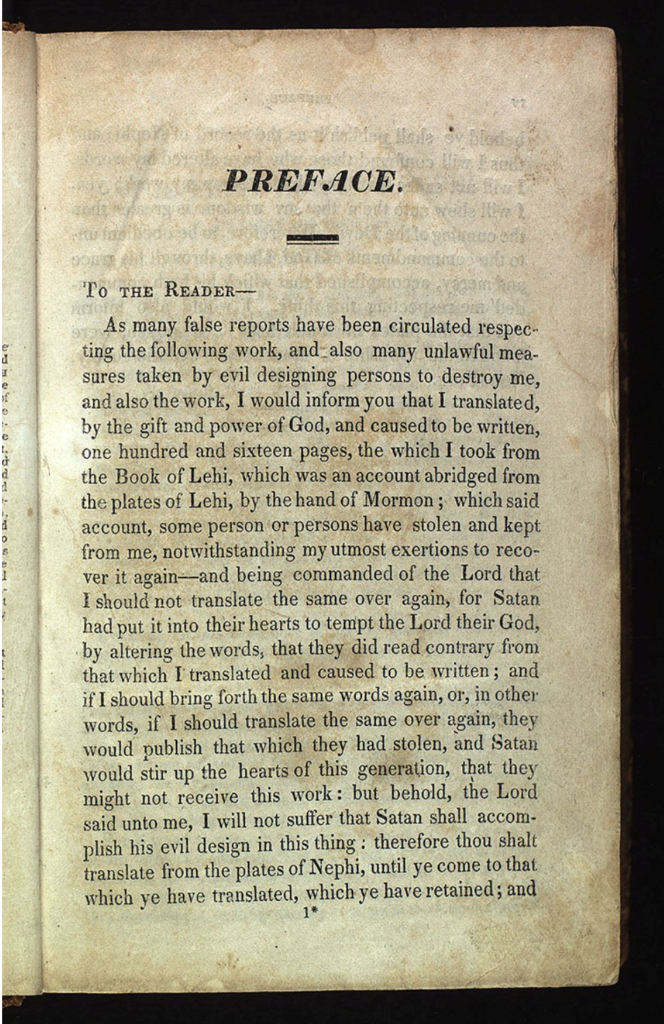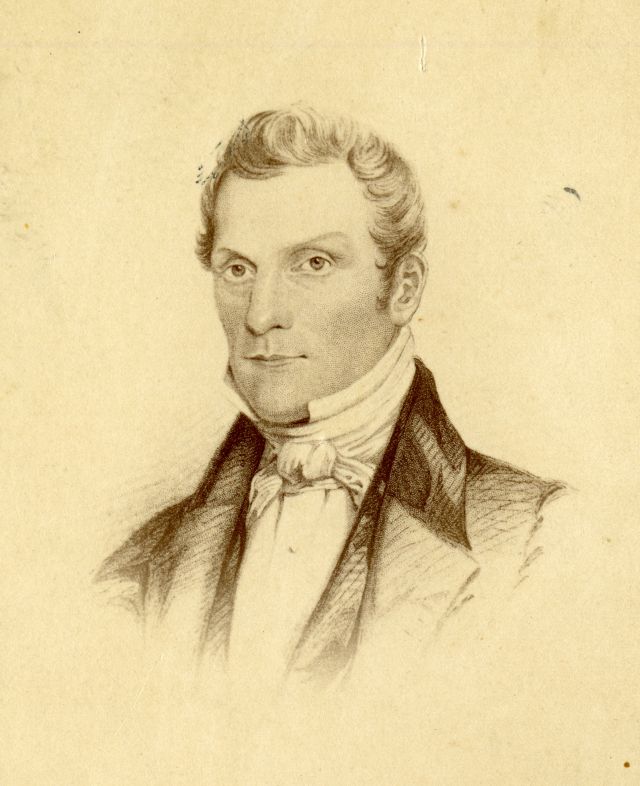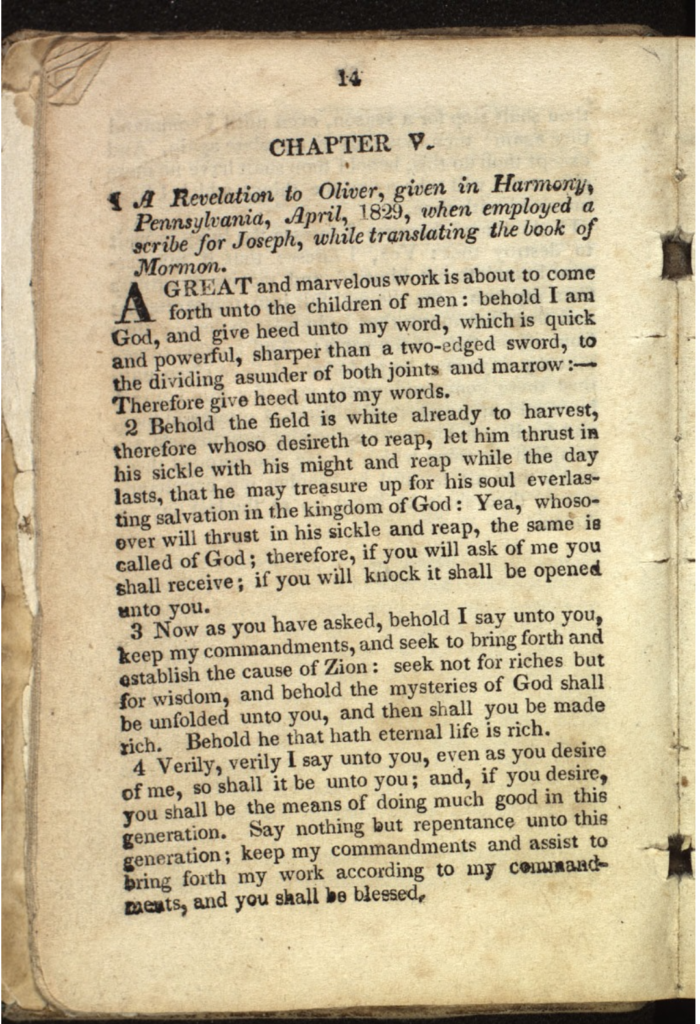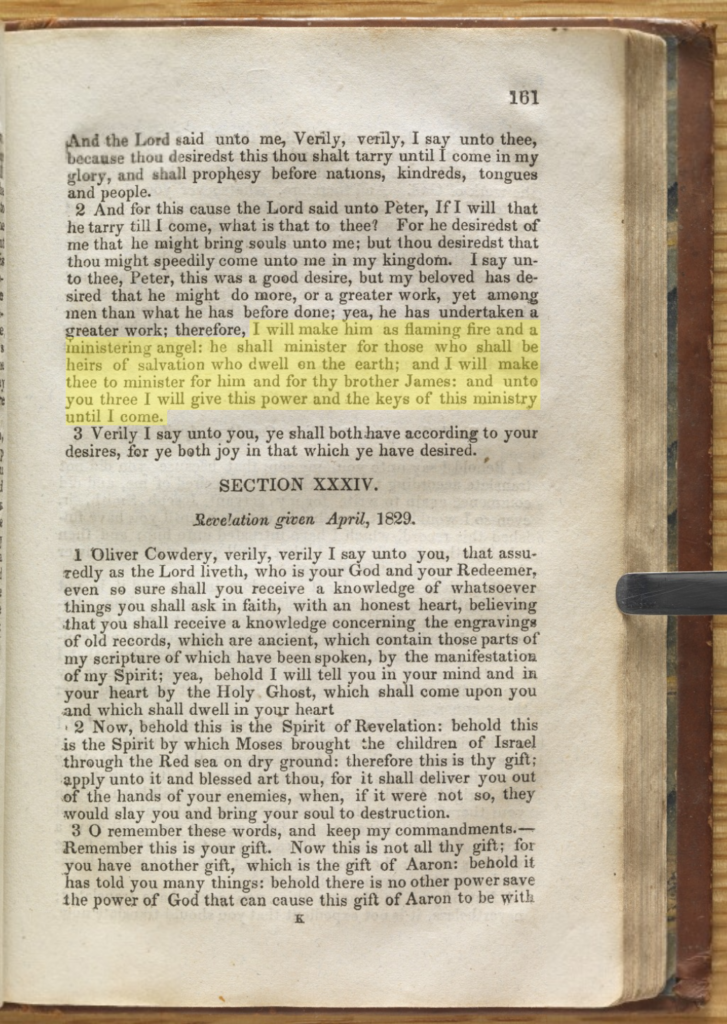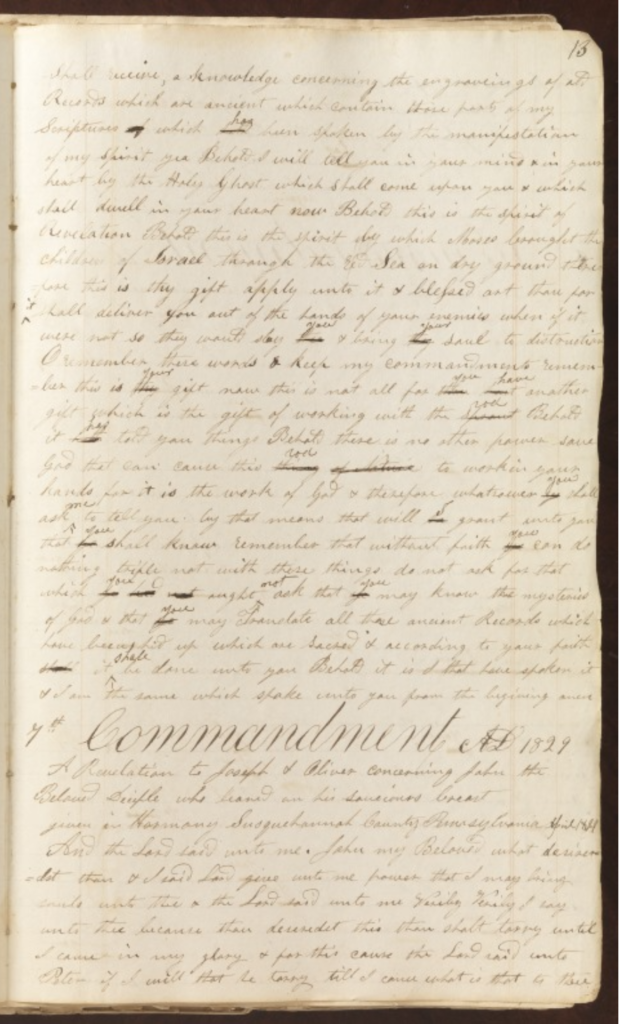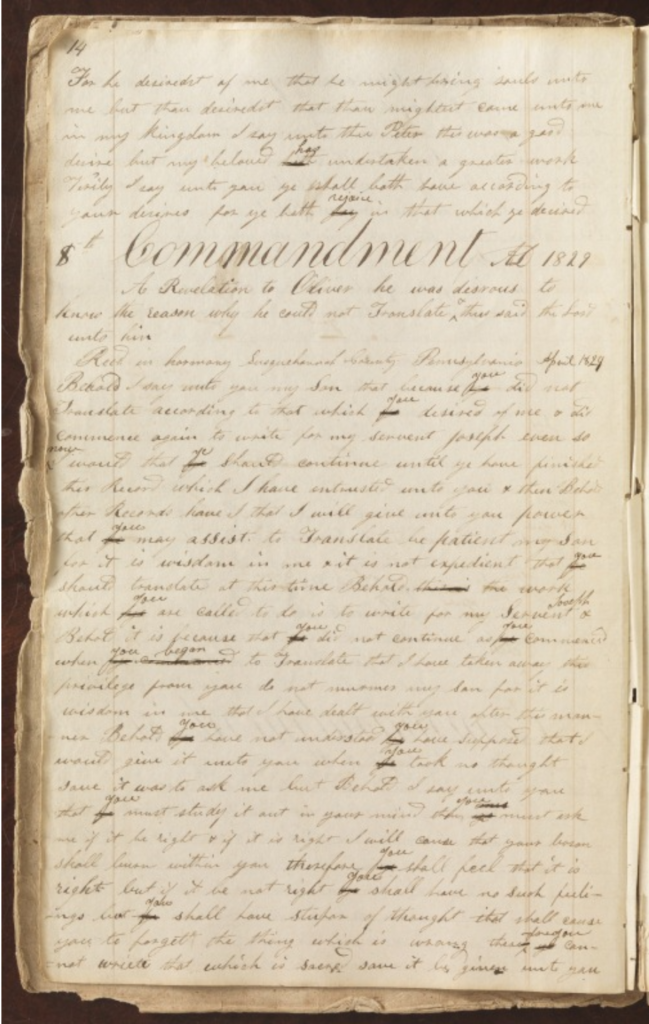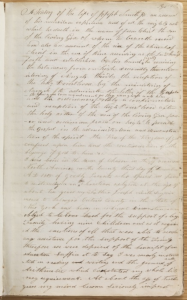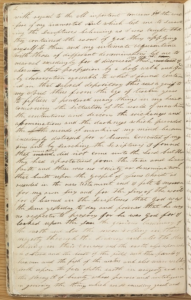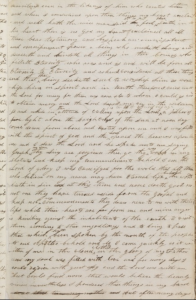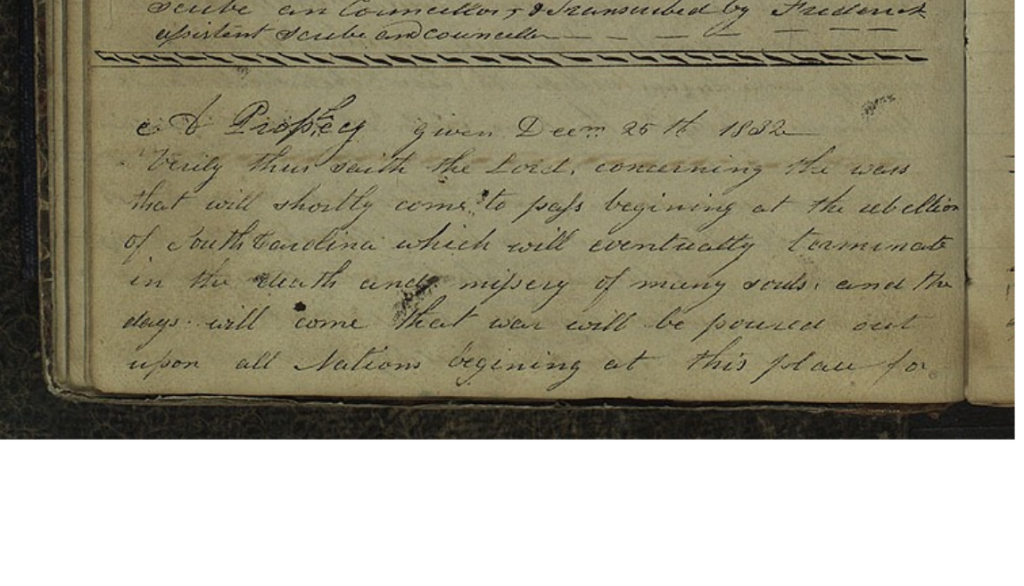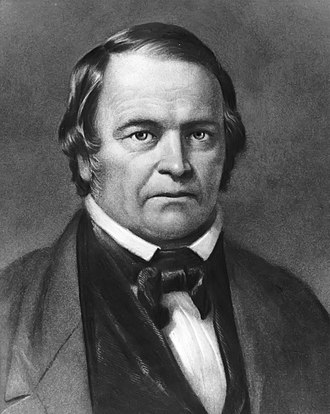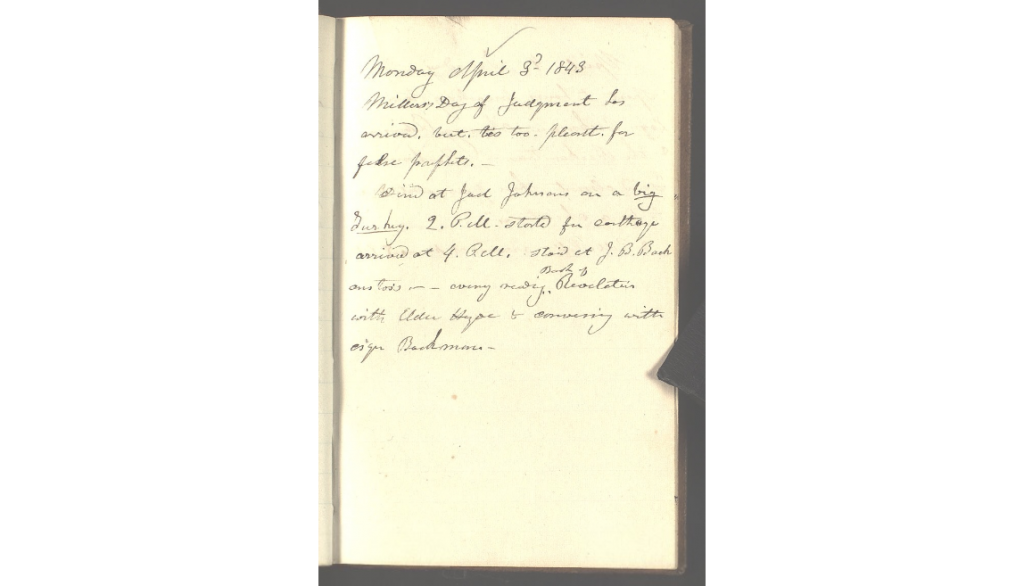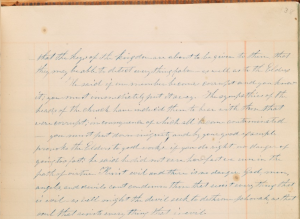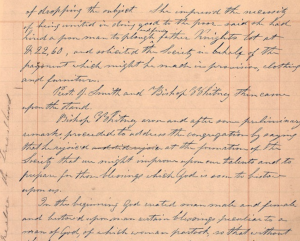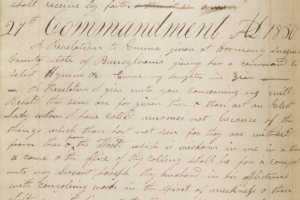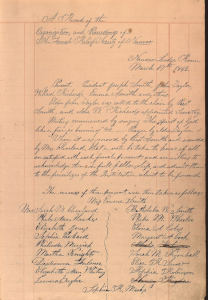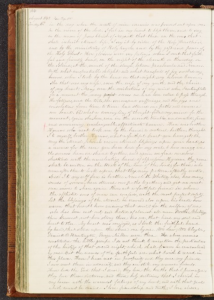Section 20
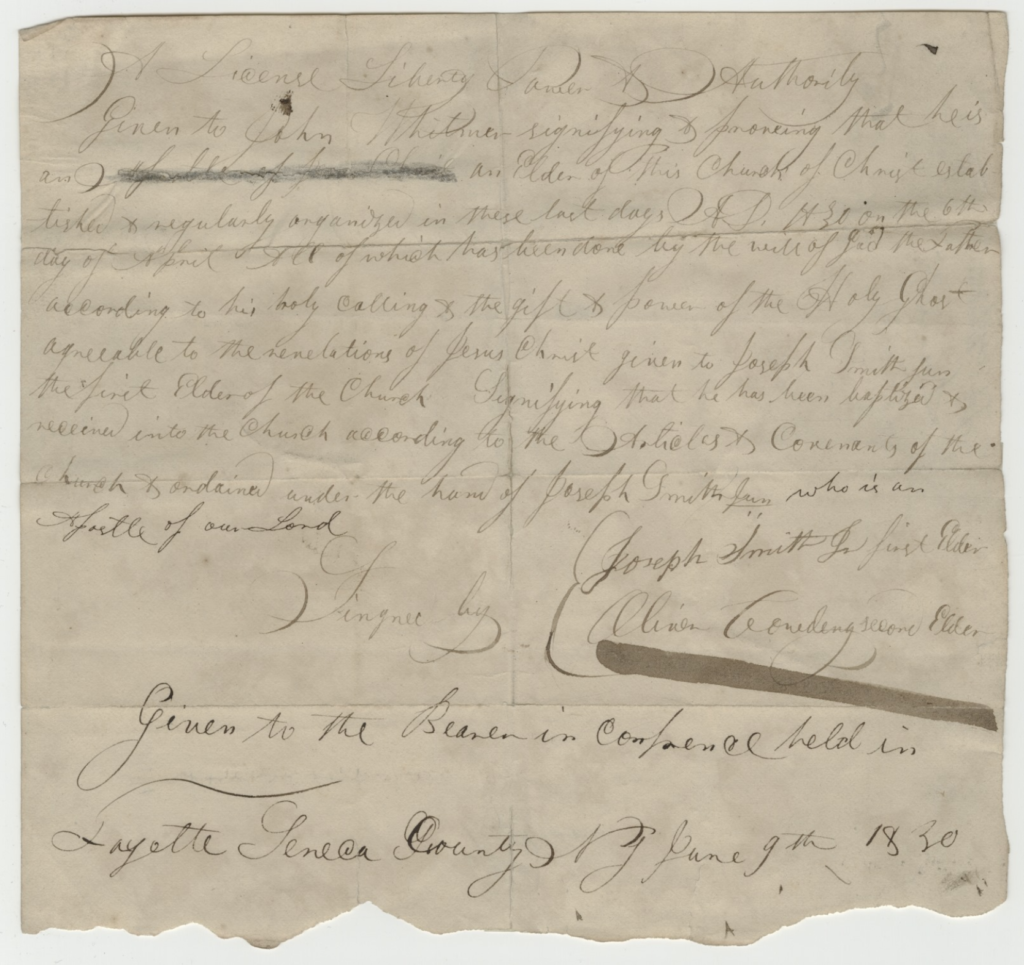
Section 20 is the founding document of the restored Church of Jesus Christ. Joseph’s history says it came “by the Spirit of Prophecy and revelation.”[1] Joseph read it and the saints unanimously received it at the Church’s first quarterly conference in June 1830.[2]
It is a constitution of sorts, and quite unique. It is not in the voice of the Lord or an angel, as most of the sections are. Rather, it is in the voice of the Latter-day Saints, a sort of “we the people,” or, at least “we the elders of the church” (D&C 20:16).
Section 20 does three things.
Its first 16 verses justify The Church’s existence by highlighting the backstory of how it came to be established on April 6, 1830: the calling and commissioning of apostles to lead it, the coming forth of the Book of Mormon, and the collective witness of the elders.
The passage in verses 17-36 declares what we know. These are articles of faith: “There is a God in heaven,” this part begins, then summarizes the plan of redemption. God created. Mankind fell. “The Almighty God gave his Only Begotten Son . . . . He was crucified, died, and rose again” so that everyone who ever lived or lives can have eternal life on conditions of enduring in faith and repentance. This section briefly situates the restored gospel relative to other theologies. Saints share with many Christians, for example, the truth that sanctification comes through the grace of Jesus Christ, but not the agency-compromising idea that a sanctified person can never fall from grace. Anyone can opt out of God’s grace, and the revelation warns the church about that.
The third and longest passage begins in verse 37. It sets the qualifications for baptism, instructs how to administer the sacrament, relates the duties of priesthood holders and other members, and tells of the need for membership records.
Oliver Cowdery did not initially like verse 37’s detailed qualifications for baptism. He had prepared an earlier draft that specified only “whosoever repenteth & humbleth himself before me & desireth to be baptized in my name shall ye baptize them.”[3] By comparison, verse 37 adds the requirements of a broken heart and contrite spirit, evidence of true repentance and willingness to assume the name of Jesus Christ with determination to serve him to the end, and a godly life (Compare Moroni 6:1-4).
Oliver demanded “in the name of God” that Joseph delete the requirement that baptismal candidates should “manifest by their works that they have received the Spirit of Christ unto the remission of their sins.” Joseph asked Oliver “by what authority he took upon him to command me to add or diminish to or from a revelation or commandment from the Almighty God.”[4] Joseph finally convinced Oliver, who read Section 20 to the church’s second conference in September 1830.[5]
There are two things section 20 does not do.
Verse 1 does not establish once and for all the date of the Savior’s birth. Verse 1 is best understood as a head note saying that the Church was organized on April 6 in 1830. It should not be understood to establish that date as precisely 1,830 years since Jesus was born. Joseph’s history says that the Lord “pointed out to us the precise day” to organize his Church.[6] It does not specify that it was his birthday, nor does verse 1 say it was. Rather, it has been interpreted to mean that it was.
Section 20 does not do all the work of establishing the Church’s authority, core doctrines, and practical organization and procedures. This revelation was amended frequently, as more became known. It is a beginning, not the sum total of the restored Church of Jesus Christ.
Section 21
After more than a year of anticipation, Joseph Smith and Oliver Cowdery organized The Church of Jesus Christ on April 6, 1830, as the Lord commanded. At the organizational sacrament meeting, Joseph received section 21. In this revelation the Lord establishes the order of his Church. Elder Boyd K. Packer taught the relationship between order, ordaining, and ordinances. To ordain, he said, was the process of putting things in order. He defined an ordinance as a ceremony by which things are put in order.[1] Consider section 21 in that light.
The order the Lord intends is clear from what the revelation says and how it says it. Jesus reveals it to Joseph who reveals it to the saints. The Lord authorizes Oliver to ordain Joseph as the first or presiding elder, “this being an ordinance unto you” (D&C 2110-11). Oliver is to be ordained as the second elder, again by an ordinance. The Savior leads his church. Joseph speaks on his behalf. The Savior inspires Joseph to move the cause of Zion forward. The Saints sustain Joseph and Oliver as their leaders and give heed to their words as they heed the Savior’s. This ordained order requires “patience and faith” (D&C 21:5).
The first command in the revelation is to record these things. The acts of putting the Lord’s Church in its ordained order must be documented. Section 21 restored the Church of Jesus Christ. After nearly two millennia, duly authorized apostles were ordained and assigned by Jesus Christ to lead his church. Many people have “wished,” as one wrote, “I had lived in the days of the prophets or apostles, that I could have sure guides.” Others looked forward, waiting for the Lord to send new apostles.[2] Those hopes were realized on April 6, 1830. As Joseph put it, “the Church of Jesus Christ of Latter-day Saints was founded upon direct revelation, as the true church of God has ever been, according to the scriptures.”
Section 22
The Book of Mormon taught the need for authorized baptism of accountable, covenanting believers. Section 20 added to it, further specifying the method and criteria for baptism. However, when some “very moral and no doubt as good people as you could find anywhere . . . came, saying they believed in the Book of Mormon, and that they had been baptized into the Baptist Church,” Joseph did not know what to tell them. He asked the Lord and received section 22.[1]
Sixteenth-century reformers were pejoratively called Anabaptists (rebaptizers) when they followed the Biblical practice of immersing accountable believers, including people already baptized as infants. The American Baptist leader Francis Wayland defended this practice. “We consider ourselves not to baptize again,” he wrote, “but to baptize those who have never submitted to this ordinance.”[2]
Section 22 makes the same case. The Lord declares that “old covenants” are “done away” because he has restored “a new and everlasting covenant, even that which was from the beginning.” So even a man baptized an hundred times would not have entered the “straight gate” by obeying an irrelevant law, by “dead works.” The Lord gave the new covenant because of these dead works.
Oliver Cowdery preached that until the Lord restored authorized baptism, “the ordinances of the gospel have not been regularly administered since the days of the Apostles.”[3] His teaching was understood by converts who flocked to the restored covenant. It was unpopular to others.[4]
Section 20 notes
[1] “History, 1838–1856, volume A-1 [23 December 1805–30 August 1834],” p. 29, The Joseph Smith Papers, accessed July 23, 2020, https://www.josephsmithpapers.org/paper-summary/history-1838-1856-volume-a-1-23-december-1805-30-august-1834/35.
[2] “Minutes, 9 June 1830,” p. 1, The Joseph Smith Papers, accessed September 23, 2020, https://www.josephsmithpapers.org/paper-summary/minutes-9-june-1830/1.
[3] Oliver Cowdery, “Articles of the Church of Christ,” Church History Library, Salt Lake City.
[4] “History, circa June–October 1839 [Draft 1],” p. [23], The Joseph Smith Papers, accessed July 23, 2020, https://www.josephsmithpapers.org/paper-summary/history-circa-june-october-1839-draft-1/23.
[5] “Minute Book 2,” p. 2, The Joseph Smith Papers, accessed July 23, 2020, https://www.josephsmithpapers.org/paper-summary/minute-book-2/4.
[6] “History, 1838–1856, volume A-1 [23 December 1805–30 August 1834],” p. 29, The Joseph Smith Papers, accessed July 23, 2020, https://www.josephsmithpapers.org/paper-summary/history-1838-1856-volume-a-1-23-december-1805-30-august-1834/35.
Section 21 notes
[1] Boyd K. Packer, “Ordinances,” BYU Devotional, February 3, 1980: https://speeches.byu.edu/talks/boyd-k-packer/ordinances/.
[2] Nathan O. Hatch, The Democratization of American Christianity (New Haven: Yale University Press, 1989), 17. Jeffrey R. Holland, “Prophets, Seers, and Revelators,” Ensign (November 2004): 6.
Section 22 notes
[1] Orson Pratt, in Journal of Discourses, 2 Nov. 1873, 16:293-94. Also see “History, circa June 1839–circa 1841 [Draft 2],” p. 38, The Joseph Smith Papers, accessed September 23, 2020, https://www.josephsmithpapers.org/paper-summary/history-circa-june-1839-circa-1841-draft-2/44.
[2] Francis Wayland, Notes and Principles on the Practices of Baptist Churches (New York: Sheldon, Blakeman, 1857), 98.
[3] “The Golden Bible,” Painesville Telegraph, 16 Nov. 1830, [3].
[4] “Mormonism,” Painesville (OH) Telegraph, 15 Feb. 1831, [1]; Thomas Campbell, “The Mormon Challenge,” Painesville Telegraph, 15 Feb. 1831, [2].

